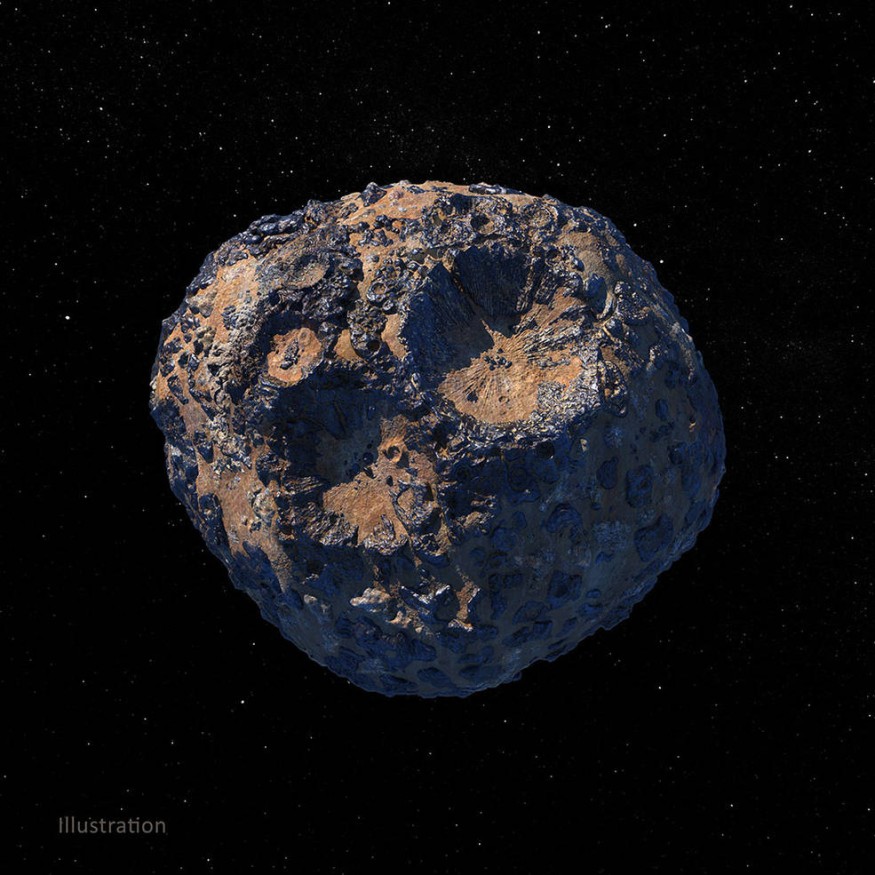A giant potentially hazardous object will pass by Earth next week. Asteroid 1994 PC1 flew over the globe 30 years ago and will return in three decades!
Due to its massive size and perilous track, astronomers have classified this one-kilometer-long asteroid - which is twice the length of the Empire State Building - as "possibly dangerous."
While this astronomical object will not collide with Earth, it is close enough to be viewable via a telescope. And that's a lot of fun.

Asteroid Bigger Than Two Empire State Building To Pass By Earth
1994 PC1, a "stony asteroid" characterized as "more huge than two Empire State Buildings," will come closest to Earth at 4:51 p.m. EST, according to Live Science.
Sky and Telescope said astronomer Robert McNaught found 1994 PC1 at Siding Spring Observatory in Australia at 18th magnitude on Aug. 9, 1994. The asteroid travels in an eccentric orbit around the Sun every 1.6 years, with a distance ranging from 0.9 a.u. at perihelion to 1.8 a.u. at aphelion.
It will approach our planet at a distance of around 1.2 million kilometers. That may appear to be a long way away, and it is, but by cosmic distances, it's a close enough shave that NASA considers it potentially dangerous.
Because it's bigger than 140 meters (460 feet) wide and travels within 0.05 a.u. (approximately 7,480,000 kilometers or 4,650,000 miles) Earth's orbit is classified as potentially hazardous (PHA) by astronomers, along with nearly 2,000 other known asteroids.
To be clear, 1994 PC1 is not a threat at this time; when it comes closest to Earth at 4:51 p.m. EST (21:51 UT) on Tuesday, Jan. 18, it will miss by 1.9 million kilometers (1.2 million miles). That's five times the distance between Earth and the Moon or nearly the same as the distance between Earth and NASA's James Webb Space Telescope.
This flyby will be our closest shave for at least the next few years. On Jan. 18, 2105, at a distance of 2.3 million kilometers, a similar but slightly further flyby happens.
Norwich astronomer Mark Thompson told Evening News 24 that while the asteroid is not expected to impact the Earth, the human species would not be wiped out if it were to reverse course.
The scientist went on to say the asteroid might devastate entire cities, and we are statistically overdue for an asteroid strike.
How to Watch
It won't be the first time the asteroid passes us by, nor will it be the closest it's ever come. But astronomers and stargazers can see this celestial phenomenon using a telescope.
The closest-approaching PHAs move very quickly and are difficult to follow. 1994 PC1 isn't one of these speed monsters, making it more approachable. It will have the appearance of a slow-moving satellite.
Backyard telescopes of roughly 6 inches or bigger in diameter, according to CNET, should be able to see it. The asteroid is at its brightest in these charts. But it stays above magnitude 13 from Jan. 12 to 21, bringing it within range of an 8-inch (200-mm) scope for more than a week.
Make your personalized maps to keep hot on 1994 PC1's tail. Use a sky-mapping application like SkySafari (Android / iOS), Stellarium, or Cartes du Ciel to enter its orbital components. Gideon van Buitenen's 1994 PC1 website also has a frequently updated map. If you don't have a telescope, the asteroid may be seen on Gianluca Masi's Virtual Telescope Project web page.
RELATED ARTICLE : NASA Says a Massive Asteroid Will Pass Earth Next Week; How To Spot It?
Check out more news and information on Space in Science Times.










